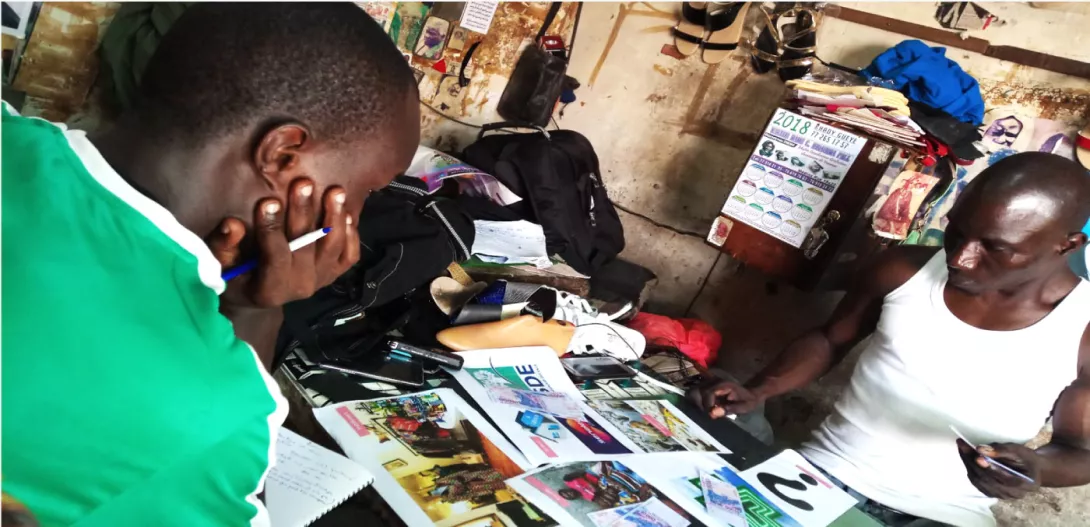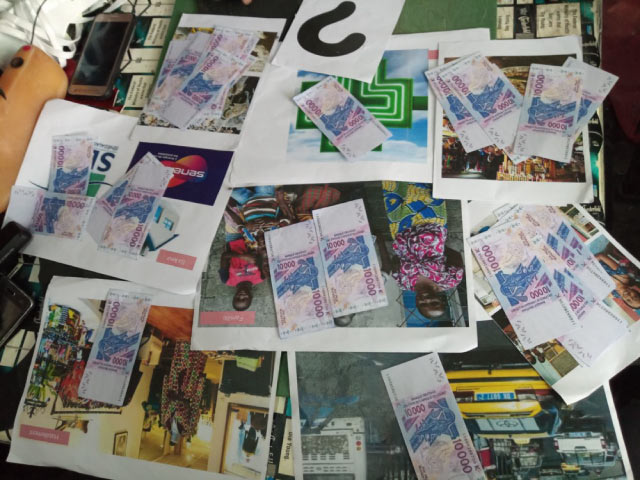
Case study on savings behavior of traders and informal sector employees in Senegal.
The challenge:
The informal in Africa … is often considered a big black hole. This is especially true when you want to start a project in this environment. What’s going on there? What are the financial flows that pass through it? By which channels? Cash, Mobile Money, in kind? What social and psychological factors underlie the decisions of the actors of the informal?
In order to help Baobab (formerly known as Microcred) to better serve its clients working in the informal sector, YUX researchers conducted a Human Centered Design (HCD) project on savings behaviors in Dakar and Thiès.
The scope:
We met small traders and their employees in trades as varied as shoe repair, hardware, the sale of fabrics, mussels or fruit, or housewives.
Our focus was on savings, but talking “money” with strangers in Senegal can be tricky. Very quickly during our preparation, we had to consider the possibility that some people would be reluctant to talk about their finances.
How then to put people at ease, better identify their problems, frustrations, to initiate concrete and realistic solutions?
Research methodology
To ask our questions, we favored quality and chose to approach a small sample of people (about thirty) but to spend a maximum of time with them in their environment.
Intercepts: To identify who to interview, UX researchers performed half a day of intercepts in each city. Intercepts are encounters in places where we think to cross profiles to look for. They only last a few minutes. We take the contacts of those who match the profile and who are volunteers and set a schedule. Ideally this appointment should be for the same day or the next day, because in the informal the diaries change very quickly.
Individual interviews and focus groups: In each city we were able to carry out 10 individual interviews and a focus group of 6 to 8 people with informal actors, employees or traders.
Finally, we organized two co-creation workshops with Baobab, during which we presented the field feedbacks and used creative tools to imagine services and a marketing strategy.
It is during individual interviews and focus groups that we generally face challenges addressing sensitive topics like personal saving and family spendings.
How to conduct an interview on a sensitive subject:

During intercepts:
Explain the general subject, in a language that the person can master (without giving too precise details not to influence the answers) For example, if it is the savings that interest you, you can say “finances”.
Explain the purpose of the study (provide services and solutions better adapted to the current offer)
Explain who will come (the researchers), and how long it will take
Explain the concept of anonymizing responses, and no answer is required
Make sure the person understands the subject and is willing
During the interviews:
Recall everything you mentioned during the intercept
Maintain the interview in a reassuring environment for the person (at home, at his place of work)
Begin by talking about a less sensitive but equally important subject to contextualize the answers, such as asking questions about the person you are interviewing.
It sounds stupid to say, but speaking normally, like meeting a friend of a friend. No expert posture.
Use playful and / or visual tools. We all love to play! For the Savings Study, we printed small miniature CFAs and images representing different expense items and asked participants to put the money they spent on each image.
Never force the person to answer.
Ask her if she has questions at the end. It is often at this moment that the person opens. She understands better the explanations you give (and you can give more) and she is often more comfortable after talking with you for a long time
Stay honest and humble.
Deliverables:
Following the research, the field feedbacks were formalized in the form of personas (we defined 4 because the informal sector is far from uniform), from marketing maps, in order to define strategies for communications based on the personas achieved, and marketing activity sheets produced with Baobab teams during design thinking workshops.
Human Centered Design is a methodology that helps obtain concrete and actionable results. It is about designing products or approaches adapted to the populations concerned.
If you found this story interesting, you can also check our recent article about community driven research in Africa using our app LOOKA ; or learn more about the life of a UX Research with the story of Aissatou.
